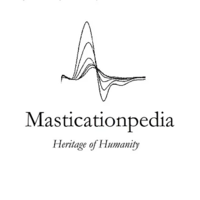Difference between revisions of "Book index"
| Line 112: | Line 112: | ||
<p style="font-size: 150%;">'''Extraordinary science'''</p> | <p style="font-size: 150%;">'''Extraordinary science'''</p> | ||
''' | '''Connectivity''' | ||
* | *Defining the Fundamental Unit | ||
* | *Separating Structural Connectivity and Functional Connectivity | ||
* | *Understanding emergent behaviour | ||
*Measuring connectivity | |||
'''Trigeminal Structural Connectivity (SC)''' | |||
*Trigeminal Root Motor Evoked Potentials (R-MEPS) | |||
**Description | |||
**Characteristics | |||
'''Trigeminal Functional Connectivity (FC)''' | |||
*Jaw jerk | |||
*Masseter tendon silent period | |||
*Masseter electrical silent period | |||
*Recovery cycle of the masseter inhibitory reflex | |||
*H-wave | |||
''' | '''Statistics''' | ||
*Definition of the | *Deterministic Diagnostic Models | ||
**Definition | |||
**2nd Clinical Case according to RDC | |||
**Limitations: Failure to detect latent neurological impairments. | |||
*Indeterministic Diagnostic Model | |||
**Definition | |||
**2nd Clinical Case according to a trigeminal electrophysiological model | |||
**Relevance of temporal evolution. | |||
*Commutative vs Non-Commutative Variables | |||
**Commutative variables | |||
**Non-Commutative variables | |||
**Impact of the temporal order of tests | |||
*Bayes' Theorem | |||
**Definition | |||
**Role in the deterministic model | |||
**Role in the indeterministic model | |||
**Bayes' Theorem and non-commutative variables | |||
'''Index <math>\psi</math>''' | |||
*Model description | |||
**Role of trigeminal motor evoked potentials (R-MEPS) in evaluating SC | |||
**Role of trigeminal reflexes in evaluating FC | |||
**Separation between Structural Connectivity (SC) and Functional Connectivity (FC) | |||
**Emergent Behaviour | |||
*Quantum Modelling of the Index '''<math>\psi</math>''' | |||
**Quantum Bayes Theorem (QBayes) | |||
**Differences from the classical approach | |||
*Expectation Value and model description | |||
**Mathematical Formalism of QBayes | |||
**Cosine of <math>\psi</math> as a measure of the overlap between concomitant pathologies | |||
'''Indices <math>\psi</math> and clinical cases''' | |||
*8th Orthodontic Clinical Case | |||
*9th TMDs Clinical Case | |||
*10th Implant-Prosthetic Clinical Case | |||
*11th Prosthetic Clinical Case | |||
</div> | </div> | ||
</div> | </div> | ||
Revision as of 14:56, 13 October 2024
Normal Science
- Logic of medical language
- The Complex Systems
- Logic of medical language: Introduction to quantum-like probability in the masticatory system
- Conclusions on the status quo in the logic of medical language regarding the masticatory system
- 4° Clinical case: Temporomandibular disorders
- 5° Clinical case: Spontaneous Electromyographic Activity
Crisis of Paradigm
Research Diagnostic Criteria (RDC)
- Jaw movements analysis: Electrognathographic Replicator
- Transverse Hinge Axis
- Vertical Hinge Axis
- The Magic of the Condylar Sphere
- Jaw movements analysis:Pantographic Replicator
- Intercondylar Distance
- Advantage and Limit of Pantography
- Jaw movements analysis:Axiographic Replicator
- Interfacial Distance
- Advantage and Limit of Axiography
- Electromyography (EMG)
- EMG Interferential pattern
- EMG at rest position
- Quantitative Analysis of EMG
- Fourier transform
- Wavelett
- Transcutaneous Electric Nerve Stimulation
- Free way space before stimulation
- Free way space after stimulation
- Closing trajectory from TENS
Beyond the RDC
- Clinical Electromyography
- Artificial Neural Networks:Automatic Neuromuscular Diagnostic
- Trigeminal Neurophysiopathology
- Trigeminal Nociceptive Evaluation in TMD Patients by studying CO2-Laser Evoked Potentials and Masseter Laser Silent Periods
- Electrical and Magnetic Stimulation of the Central and Peripheral Nervous System:Modeling of Generated Fields and Data Interpretation
- Transcranial Magnetic Stimulation and Brain Plasticity in Post-Stroke Recovery
- Pain Pathophysiology
- Role of Metabotropic Glutamate Receptors in Pain
- Neuronal Basis of Neuropathic Pain and Neuroprotective Mechanisms of Antiepileptic Drugs
- Use of Functional Magnetic Resonance Imaging (fMRI) in Pain Research
- Neuroradiology in Craniofacial Pain
Conclusions to the Paradigm crisis chapter
Extraordinary science
Connectivity
- Defining the Fundamental Unit
- Separating Structural Connectivity and Functional Connectivity
- Understanding emergent behaviour
- Measuring connectivity
Trigeminal Structural Connectivity (SC)
- Trigeminal Root Motor Evoked Potentials (R-MEPS)
- Description
- Characteristics
Trigeminal Functional Connectivity (FC)
- Jaw jerk
- Masseter tendon silent period
- Masseter electrical silent period
- Recovery cycle of the masseter inhibitory reflex
- H-wave
Statistics
- Deterministic Diagnostic Models
- Definition
- 2nd Clinical Case according to RDC
- Limitations: Failure to detect latent neurological impairments.
- Indeterministic Diagnostic Model
- Definition
- 2nd Clinical Case according to a trigeminal electrophysiological model
- Relevance of temporal evolution.
- Commutative vs Non-Commutative Variables
- Commutative variables
- Non-Commutative variables
- Impact of the temporal order of tests
- Bayes' Theorem
- Definition
- Role in the deterministic model
- Role in the indeterministic model
- Bayes' Theorem and non-commutative variables
Index
- Model description
- Role of trigeminal motor evoked potentials (R-MEPS) in evaluating SC
- Role of trigeminal reflexes in evaluating FC
- Separation between Structural Connectivity (SC) and Functional Connectivity (FC)
- Emergent Behaviour
- Quantum Modelling of the Index
- Quantum Bayes Theorem (QBayes)
- Differences from the classical approach
- Expectation Value and model description
- Mathematical Formalism of QBayes
- Cosine of as a measure of the overlap between concomitant pathologies
Indices and clinical cases
- 8th Orthodontic Clinical Case
- 9th TMDs Clinical Case
- 10th Implant-Prosthetic Clinical Case
- 11th Prosthetic Clinical Case

